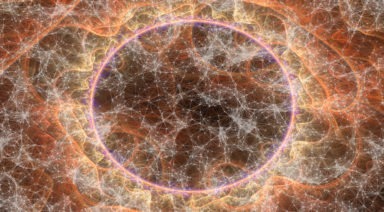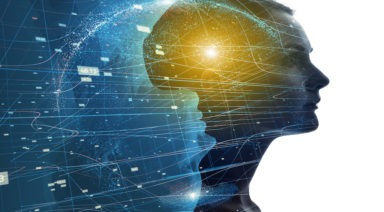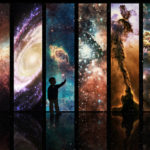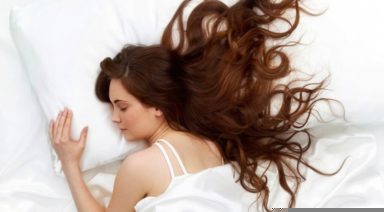Scientists Find the Mind Has Power to Manipulate Matter

A groundbreaking new experiment shows the power of the mind to influence matter.
The Institute of Noetic Sciences (IONS), founded in 1973 by astronaut Edgar Mitchell, has for decades been at the forefront of scientific research into psychic phenomena and the nature of consciousness. Much of their study has been around psychophysical phenomena or the ways in which our mind or consciousness affects the physical world of matter. In a new experiment, scientists added a novel element from the world of quantum physics which may prove to be quite significant.
Dr. Dean Radin the chief scientist at IONS and the head of the study said, “It has been said that there are strange things associated with quantum mechanics that are very similar to strange things associated with psychic phenomena.”
“The two things in quantum mechanics that are often called ‘weird’ because they’re strange, involve a property called non-locality, which means that objects even though they’re separated in space, are somehow still connected. This is what Einstein called ‘spooky action at a distance,’ and it took roughly 60 years for scientists to figure out ways of telling whether or not things really were connected in a non-local way. So, now we not only know that is a fact but there are technologies being used that use this property of non-locality.”
“So that’s one thing, the second thing in quantum mechanics is the notion that the observer simply by observing a system can change its behavior,” he said.
Watch more:
“There are some kinds of systems that can be set up, like optical systems, where if you observe where a photon goes in the optical system, then the photon’s behavior will change. And it’s not because you’re interfering with the photon, it has something to do with extracting information out of the optical system,” Radin said.
In this latest experiment, researchers explored this observer effect by setting up an optical system that participants observed for the first time a set of non-local, entangled photons.
“When you look at the history of studies on mind-matter interaction, the mental part is always non-local in the sense that your mind is going to influence something at a distance. But if you look at the kinds of targets that have been studied—and it’s a very wide range, everything from photons and electrons, to water to human behavior, to random events, a huge range—all of those targets are local,” Radin said.
“This new experiment involving entangled photons is, by definition, a non-local matter target. It’s hunks of matter, or energy in this case, with photons that are non-locally connected, we used a device that actually produced about 1,000 entangled photons per second, and so we’re interested in is: does a non-local mind interact with non-local matter.”
In the experiment, participants were instructed to focus their attention on a computer screen, on which were projected entangled photons, which appeared as a line graph. When the line appeared they were told to try to make it go up with their mind, and when it disappeared to withdraw their attention. The degree to which the participants were able to affect the photons, was a measure of the degree to which they were affecting the strength of the photon’s entanglement. The results, while preliminary, were compelling.
“So, entanglement is not an all-or-one phenomenon, there’s a spectrum,” Radin said. “So a very weak entanglement, if you just go below the weakness, it’s classical particles—there are two particles, which are completely separate—the moment they become entangled, they share properties (even though they’re separate). So the degree to which they share those properties, the strength of it, can be modulated. So we wanted to see, could the mind modulate non-local entanglements. So to make a very long story short, the answer is yes. What we found was that when people are asked to focus their attention towards the entangled photons, we found the entanglement strength increased.”
What are the implications of this finding?
“This actually has interesting pragmatic consequences, because, in technologies that are using entanglement, the fidelity of the entanglement is very important. It’s difficult to maintain entanglement, it’s kind of a fragile phenomenon.” Radin said. “So, when you’re creating quantum computing or quantum cryptography, or a range of many other types of quantum-based technologies, a lot of effort is used to maintain the quantumness of the connections. Well, if it turns out that simply focusing your mind towards these quantum objects maintains the fidelity, especially entanglement fidelity, that is doing what is necessary in order to make these things work. So you could project then that, if we get really good at this kind of task, then we can make quantum computers work better simply by focusing our mind towards it.”
Beyond these potentially revolutionary applications, there’s an even greater implication of this research.
“When your intention is focused on something, it’s not just in your head, aspects of the world are changing,” Radin said. “So the most interesting thing about this experiment is that the aspect of the world that changed, we think, has to do with entanglement, which you can think of it as a very deep element of the fabric of reality.”
“Current ideas within physics are that our notions of space and time themselves, those things are not fundamentals as we already know from relativity theory, but they actually emerge out of entanglement, so entanglement seems to be a more fundamental way of thinking about the nature of reality and that gives rise to space and time. So, if your mind can influence entanglement, it means that you can warp space and time itself.”
Further investigations are forthcoming and could lead, not only to dramatic technological advancements but to a deeper understanding of the very fabric of reality.
432 Hz Frequency: What It Is And How To Connect With Its Power

The 432 Hz frequency is a musical tuning used since ancient times by various cultures due to its harmonizing effect on the body and mind. Its sound resonates with mathematical patterns found in nature and is considered a tool for well-being and the expansion of consciousness. In this article, we explore what the 432 Hz frequency is, its uses, and how to incorporate it into daily life.
Table of Contents
- What Is The 432 Hz Frequency?
- What Is The 432 Hz Frequency Used For?
- Differences Between 432 Hz And 440 Hz Frequencies
- How To Use The 432 Hz Frequency In Your Daily Life
What Is The 432 Hz Frequency?
The 432 Hz frequency is a musical tuning that maintains a mathematical relationship with nature and the universe. It is in tune with the golden ratio, present in the structure of the human body and in patterns such as the Fibonacci sequence. Its sound is more harmonious and balanced compared to the standard 440 Hz tuning.
Different civilizations have used this frequency in their spiritual and ceremonial practices. In ancient Greece, Pythagorean music was based on mathematically perfect scales, while in Egypt and India specific sounds were used to induce deep meditative states. Many ancient instruments were designed to vibrate at 432 Hz, suggesting an intuitive understanding of its impact on consciousness.
In the series Sound of Creation, available on Gaia, experts like Gregg Braden and Dr. Robert Gilbert explore the relationship between sound, sacred geometry, and the vibration of the universe. Through scientific findings and ancestral knowledge, this series reveals how certain frequencies can influence perception and human well-being.
What Is The 432 Hz Frequency Used For?
The 432 Hz frequency has multiple applications for harmonizing the body and mind. Its balanced vibration influences emotional states, concentration, and energetic health. Below are some of its main functions:
- Deep relaxation: It lowers heart rate and brain activity, reducing stress and anxiety. Its sound has a calming effect that facilitates meditation.
- Enhanced concentration: It increases mental clarity and promotes focus. Listening to music in this frequency during study or work improves information retention.
- Energy balance: It aligns the flow of energy in the body and harmonizes the chakras. Its vibration restores physical and emotional well-being.
- Greater connection with nature: It resonates with the Earth’s frequency, strengthening the sense of unity with the environment. Listening to it outdoors enhances its beneficial effects.
- Induction to restorative sleep: It promotes progressive relaxation that facilitates deep rest. Using it before bedtime helps improve sleep quality and reduce anxiety before sleeping.
- Emotional healing: It releases accumulated tension and balances the nervous system. Its vibration works on the subconscious, promoting well-being and emotional balance.
- Creativity stimulation: It activates areas of the brain related to inspiration and imagination. It is ideal for boosting creativity in artistic and expressive disciplines.
Differences Between 432 Hz And 440 Hz Frequencies
The 432 Hz and 440 Hz frequencies are both used to tune musical instruments, but generate different effects in those who listen to them. Today, most music is tuned to 440 Hz, a standard officially adopted in the 20th century. However, 432 Hz has been used in various traditions for its more harmonic sound and its ability to induce relaxation.
Many people perceive music tuned to 432 Hz as softer and more balanced, whereas 440 Hz may feel more tense and stimulating. For this reason, 432 Hz is preferred in practices involving meditation, healing, and wellness. While both frequencies can trigger emotional and physical responses, 432 Hz has become a popular alternative for those seeking a more harmonious and profound sound experience.
How To Use The 432 Hz Frequency In Your Daily Life
Incorporating the 432 Hz frequency into your daily routine is a simple way to promote well-being and emotional balance. You can listen to music tuned to 432 Hz during meditation, upon waking, while working, or before sleeping. It’s also helpful in yoga sessions, massages, or any relaxation practice, as its vibration enhances focus and energetic harmony.
-
432 Hz Music For Meditation And Mental Balance
Meditating with 432 Hz music enhances relaxation and facilitates connection with the present moment. Its vibration induces a state of mental calm, reducing internal noise and allowing for a deeper meditative experience. Many people use it to relieve anxiety, improve focus, and enhance introspection.
An example of this frequency can be found in the series Fractal Universe: Meditations for Conscious Elevation, available on Gaia, where sound patterns and geometry are explored to facilitate deep meditative states. The first episode uses a frequency based on the Schumann resonance, related to the Earth’s natural vibration, allowing the mind to synchronize with a state of balance and expansion.
-
Using The 432 Hz Frequency For Energy Healing
The 432 Hz frequency is used in sound therapies to balance the body’s energy and release emotional blockages. It’s believed that its vibration harmonizes the chakras and improves the flow of vital energy, making it effective in practices like Reiki, sound bowl therapy, and vibrational healing sessions.
Listening to this frequency while practicing breathing or visualization exercises can enhance its effects. Its sound generates a sensation of well-being and stability, helping to restore emotional and physical balance. For this reason, many people incorporate it into their healing and self-discovery journey.
-
How To Listen To 432 Hz Music For Better Sleep
Music in 432 Hz is an effective tool to improve sleep quality and reduce anxiety before sleeping. Its soft, enveloping sound slows down mental activity, helping the body enter a state of deep relaxation. Listening to it for a few minutes before bed can ease the transition to sleep and reduce insomnia.
To enhance its effects, it’s advisable to create a quiet and distraction-free environment. You can combine the music with slow breathing exercises or nature sounds tuned to the same frequency. This practice calms the nervous system and promotes more restorative rest.




































